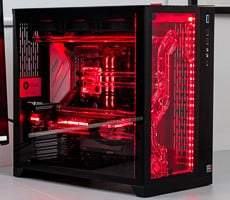Asus G51VX-RX05 Gaming Notebook Review
We ran the Asus G51VX through Futuremark’s latest system performance metric built especially for Windows Vista, PCMark Vantage. This benchmark suite creates a host of different usage scenarios to simulate different types of workloads including High Definition TV and movie playback and manipulation, gaming, image editing and manipulation, music compression, communications, and productivity. We like the fact that most of the tests are multi-threaded as well, in order to exploit the additional resources offered by multi-core processors.
|
|
|


|
We continued our testing with SiSoftware's SANDRA 2009, the System ANalyzer, Diagnostic and Reporting Assistant. We ran three of the built-in subsystem tests (CPU Arithmetic, Memory Bandwidth, Physical Disks). All of the scores reported below were taken with the processor running at its default clock speeds of 2.0GHz with 4GB of DDR2-800 RAM running in dual-channel mode.
When compared to mobile dual core processors, Intel's P7350 performed well, even with its slight speed disadvantage. The 4GB of DDR2-800 memory provided 5.33GB/s of bandwidth while the 320GB 7200rpm hard drive offered a 68MB/s read speed.









